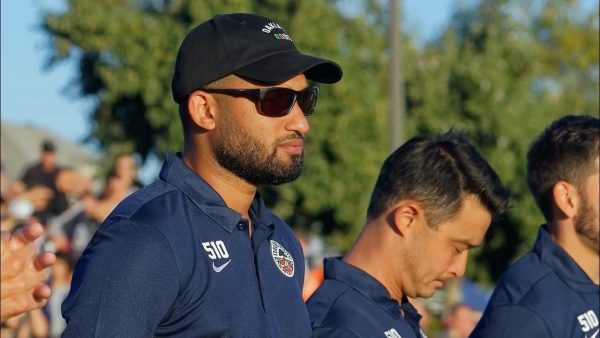Youth football participation on the decline

The future for tackle youth football does not look promising thanks to recent scientific studies regarding the relationship between the sport and chronic traumatic encephalopathy (CTE) conducted by Boston University. CTE has prominently come to light over the past decade, with football being a major focus and contributor to the disease.
“The research is clear – when children participate in high-impact, high-contact sports, there is a 100% risk of exposure to brain damage,” said Dr. Bennet Omalu, author of the award-winning book “Concussion” which examines CTE, told The New York Times.
Football is seeing a decline in participation at all levels. High school football participation is down 3.5 percent in the U.S. over the past five years, according to an annual survey conducted by the National Association of State High School Federations. Thousand Oaks High School in Ventura County cut their junior varsity football team this season since they need younger athletes to fill out the varsity roster.
With increasing studies and data about CTE being released every day, it is no coincidence that youth football is a starting point in the efforts of eliminating tackle football.
“Once you know the risk involved in something, what’s the first thing you do? Protect children from it,” added Omalu in The New York Times interview.
California, along with Illinois, Maryland and New York, proposed legislation that would require youth tackle football participants to be at least 12 years of age. Assemblyman Kevin McCarty and Assemblywoman Lorena Gonzalez Fletcher proposed the “Safe Youth Football Act” back in early February since depression, memory loss and dementia are often the provided reasons to eliminate youth football. The assembly members used a fact sheet with the studies from Boston University as credentials for their bill, along with promoting flag football as a safer alternative.
“The brain is going through this incredible time of growth between the years of 10 and 12, and if you subject that developing brain to repetitive head impacts, it may cause problems later in life,” Robert Stern, one of the authors of the study conducted at Boston University told The New York Times.
Despite the overwhelming science supporting the intention of the bill, the “Safe Youth Football Act” was pulled in late April due to lack of support, according to McCarty.
An argument could easily be made about the competitive mindset of coaches involved with tackle youth football. Some coaches let their ambition of winning outweigh the ethical significance of safety. Former Hayward youth football coach, player and parent Alexander Jones pulled his son completely out of tackle football after watching him get a concussion.
“I was coaching my team and I saw my son on the other field take a big hit,” said Jones. “He got up but was shaky and seemed dazed. I kept watching him and instead of pulling him out they just incorporated him back into the hitting drills. I went over and checked on him and it was like the lights were on but nobody was home. Coaches are more concerned with winning and results than they are with the health and safety of players.”
In Alameda, former youth tackle football player Bruce Johnson began playing at the age of eight and mentioned similar experiences to those of Jones.
“CTE wasn’t a thing when I was playing youth football,” Johnson said. “You just ‘got your bell rung’ when I was playing youth football. Then we’d get right back out there. I agree with the age standard. Especially with all the science, we have today. It’s pretty obvious kids should not be playing tackle football.”
With new information about football and CTE rapidly being released, the future for tackle youth football could be considered ambiguous, but statistics show it is a sport with waning participation. Although many people still love their football, the lack of participation in tackle youth football seems to be a step in the right direction to make the game safer.











